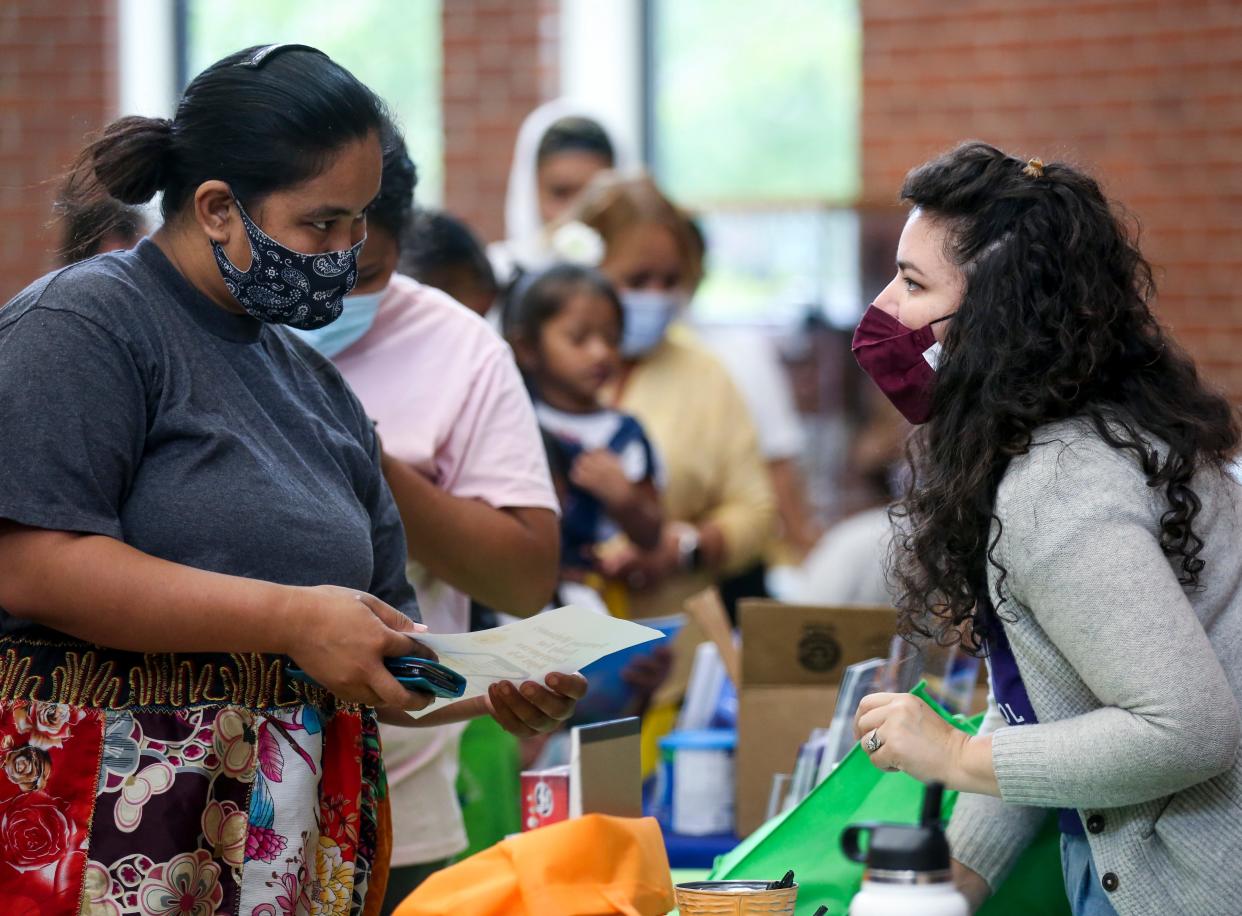COVID-19 has disproportionately impacted communities of color in Oregon, report shows

COVID-19 has disproportionately impacted communities of color in Oregon during the past year, a new report shows.
The 2021 COVID-19 Annual Data Report, released by the Oregon Health Authority, shows cumulative case rates — cases per 100,000 individuals — in 2021 were higher among Black, native Hawaiian or Pacific Islander, and Indigenous or Alaskan Native communities than those of white people.
It was a continued trend from last year’s report as non-white racial and ethnic groups continue to be disproportionately impacted. This is despite promises from state officials since early in the pandemic that addressing inequities would be a priority.
While numbers for Latino individuals were also disproportionate, they did improve from the prior year.
The COVID-19 pandemic has been a challenge for state and federal governments to navigate, impacting health systems, the economy, local communities and schools.
“The current pandemic is the most challenging public health crisis the nation has faced in more than a century,” OHA public affairs specialist Rudy Owens said in a prepared statement.
During the past two years, the OHA worked to implement a statewide response aimed at “providing life-saving vaccines, including to groups who have seen a disproportionate burden during the pandemic,” but communities of color continue to experience worse outcomes.
State and local officials have come under fire throughout the pandemic for actions some say contributed to the inequities.
Gov. Kate Brown faced criticism early in the vaccine rollout for prioritizing teachers over categories that typically include more individuals from communities of color, such as front-line workers and agricultural workers.
Brown at the time defended her decision.
“The harsh reality is we do not have enough vaccines,” she said. “There are no easy answers here, only difficult decisions.”
What the data shows
Communities of color already experience health inequities due to barriers such as lack of access to health care, language, low-income jobs and poor working conditions.
“The pandemic has intensified and worsened health inequities caused by systemic racism in the United States,” Owens said in the statement.
Such barriers are often attributed to systemic racism, racism that is embedded into societal laws and government systems.
Weekly report:Lane County's COVID-19 cases fall 37.7%; Oregon cases plummet 30.4%
Racial demographic data was available for 73% of reported cases in 2021, which is down from 83% of all reported cases in 2020. Ethnicity was reported for 63% of all cases.
Black communities accounted for more than 4% of outbreaks from March to June of 2021, though they make up less than 2% of the Oregon population.
Similarly, Latino individuals accounted for 17% of total known cases during 2021, though they make up approximately 13% of the population. This number decreased from 37% in 2020.
Cumulative case rates were highest among Indigenous and Alaskan Native communities and lowest among white people.
People of color were also more likely to be hospitalized than white people, according to the data.
Compared to the previous year, COVID-19 hospitalizations decreased among all demographic groups, but cumulative case rates increased amongst all non-white racial groups.
Working to eliminate inequities
The Oregon Health Authority's goal of eliminating health inequities by 2030 takes a community-based approach by investing in community health programs that will focus on equity and making health care more accessible for all Oregonians.
“Oregon’s top priority will be to support the capacity and follow the lead of the communities that have been hit the hardest by COVID-19,” Owens said.
The continued COVID-19 response of the OHA includes:
Continuing to distribute vaccines, including omicron boosters; masks, and COVID-19 tests to high-risk people.
Continuing to track the spread of COVID-19 and to maintain the capacity of vaccines, treatments, tests and lab tests to support the need of the community.
Keeping schools open while developing a disease management plan to do so safely.
Managing COVID-19 outbreaks to support physical and mental health.
To support this response, the OHA has partnered with more than 175 local nonprofits, health clinics and other community groups, Owens said.
Lane County Public Health’s standing vaccination clinics:
2 p.m. to 4 p.m. Tuesday: Bethesda Lutheran Church, 4445 Royal Ave., Eugene, indoor clinic that offers Pfizer only, appointments encouraged, online at https://bit.ly/LaneCOVIDvaccines or call 541-682-1380.
1 p.m. to 6 p.m. Tuesday and Wednesday: Florence Event Center, 715 Quince St., Florence, walk-in only clinic.
There are also numerous ongoing community vaccine clinic locations, go to https://bit.ly/LaneCOVIDvaccines or call 541-682-1380.
Sydney Wyatt covers healthcare inequities in the Mid-Willamette Valley for the Statesman Journal. Send comments, questions, and tips to her at SWyatt@gannett.com, (503) 399-6613, or on Twitter @sydney_elise44
The Statesman Journal’s coverage of healthcare inequities is funded in part by the M.J. Murdock Charitable Trust, which seeks to strengthen the cultural, social, educational, and spiritual base of the Pacific Northwest through capacity-building investments in the nonprofit sector.
This article originally appeared on Salem Statesman Journal: COVID-19 worsening health inequities for communities of color

